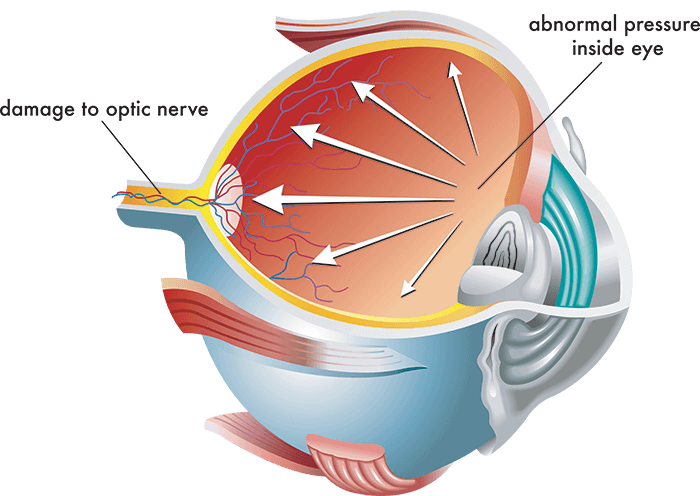What is Glaucoma?
Glaucoma is a common disease which can cause a progressive loss of vision if left untreated. The good news is that with modern day advances in technology, we now have excellent methods of diagnosing glaucoma and effective therapies for treatment of this disease.
Glaucoma affects the optic nerve of the eye which sends signals from the eye to the brain where they are processed to form images. In patients with glaucoma, there is a slow, progressive loss of the nerve fibers which make up the optic nerve. You cannot see your optic nerve but your Ophthalmologist is able to see it when examining you at the slit lamp, a special microscope for eye examination. He or she may use special lenses or devises to visualize our optic nerve. There are also a number of special tests which may be ordered to help evaluate for glaucoma.
Is there a cure for glaucoma?
There is no cure for glaucoma, but early detection of the disease along with lifelong monitoring can best protect you against vision loss from glaucoma.
What are the symptoms of glaucoma?
There are many different types of glaucoma, but the majority of patients we see have a form of glaucoma called primary open angle glaucoma. This type of glaucoma does not produce any pain or redness of your eye. It doesn’t cause itching or redness or foreign body sensation either. So in this way, many patients with early glaucoma do not have any symptoms. This is why regular follow up with your physician is key for treatment of glaucoma. When glaucoma becomes severe, you may notice changes in your peripheral vision or even loss of central vision.
Could I be at risk for glaucoma?
Glaucoma can occur in any age group. With increasing age, the disease becomes more common. If you have a family member with glaucoma, you are at increased risk of developing it yourself. Other known risk factors include African American heritage, increased intraocular pressure, and thinning of your cornea.
Normally the range for intraocular eye pressure is between 10 to 21 mmHg and most people in this range will never develop glaucoma. People with pressures in the “normal” range, however, can still develop glaucoma. Also, there are people with elevated pressures above 25mmttg who may not show any damage to their optic nerve. Therefore, while the eye pressure is one of the most important factors that your physician may be interested in, it is not the only one.
What special tests could I expect may be performed?
In addition to a complete eye examination at one of our New Hampshire or Maine locations, your physician may order additional testing to provide more information about the status of the health of your optic nerve. These include visual field tests, tests of your corneal thickness, and computerized analysis of your optic nerve. At Eyesight Ophthalmic Services in New Hampshire, we are fortunate to have all the newest and latest technological advances to help us manage glaucoma including the GDx Nerve Fiber Analysis and Optical Coherance Tomography Tests for the optic nerve. These are tools that use lasers and/or ultrasound which are harmless to your eye to scan your optic nerve and the nerve fiber layer. This is the layer of nerves which lines the inside of your eye overlying the retina. The information from these tests is then available to your doctor in the form of pictures and graphs which indicate the probability of glaucoma. These are very powerful tests which can pick up early glaucoma and detect very subtle changes which may be too small to detect by more old fashioned means. Your doctor may also take photographs of your optic nerve which is extremely useful for managing your glaucoma over time.
How is glaucoma treated?
The goal of glaucoma treatment is to slow the disease progression and to thereby preserve vision as much as possible. A number of excellent eye medications are now available. Sometimes laser treatments are necessary as additional treatment to eyedrops. In some patients, these measures may not be enough. Glaucoma surgeries are performed in the operating room and the goal of these surgeries is to create a path for the fluid in your eye to drain effectively.





